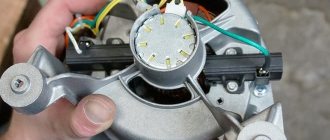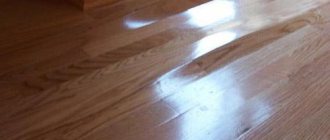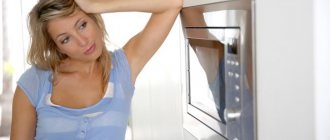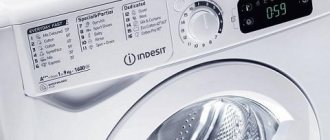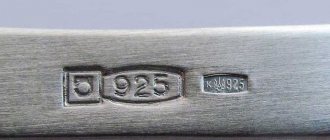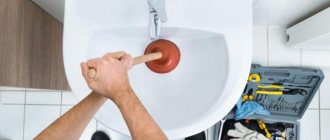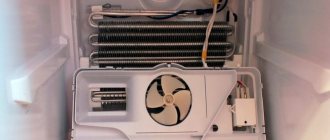Laminate has gained its high popularity due to its aesthetics and good performance. If the installation work is carried out correctly, the floor will look like a natural material – wood. But if serious violations were made during installation, the floor covering will soon begin to make unpleasant sounds and crackling sounds when walking. You can remove the creaking of laminate flooring without disassembling it; there are several effective ways. It is important to know the causes of malfunctions - this will make it much easier to decide on a solution method.
Why does laminate flooring squeak when you walk after installation?
Having familiarized yourself with the main causes and ways to eliminate squeaking laminate flooring, you can solve the problem that has arisen in a short time and without disassembling the floor.
Violations during preparatory activities
If the base under the floor covering is uneven and poorly prepared, then undesirable consequences in the form of an unpleasant squeak will occur. A clear sign of non-compliance with the rules for preparing the base will be noise not over the entire surface, but only in certain places, locally. In such areas there are irregularities; under load, the laminate bends, which causes a creaking sound.
Using a level you can immediately identify floor unevenness
Thick backing
Laminate floors can creak when using the wrong thickness of polyurethane foam sheets - the backing. The main purpose of the canvas is to correct minor floor defects, thanks to sufficient shock-absorbing properties and compressive strength. If a cheaper fabric was chosen - polyethylene foam, which is too soft for these purposes, the likelihood of extraneous sounds is very high. In this case, the laminate locks begin to bend under the weight of a person.
Important! To prevent the laminate from squeaking when walking, it is necessary to use a backing up to 3 mm thick.
Thick backing creates squeaking noise when walking on laminate flooring
Incorrectly selected gap between the laminate and the wall
To avoid negative consequences during the installation process, it is necessary to leave a gap between the floor covering and the wall. Its size is directly influenced by the total area of the room: the larger the parameters, the larger the gap between the laminate and the wall should be. The main thing here when choosing a plinth is to take this size into account; the gap needs to be completely hidden.
The minimum gap size is 7 mm
If all the rules regarding the gap between the laminate and the wall are observed, there will be no excessive load on the joint locks, therefore, creaking of the floor is eliminated. This compensation space allows the boards to move apart under tension. Otherwise, a small gap limits the floor covering; there is not enough room for it to expand, and as a result, the lamella is pressed into both the wall and the baseboard. Loud unpleasant sounds will also occur when laying the laminate back to back; there will be no necessary gap between the wall and it.
Changes in indoor humidity levels
Laminate flooring in an apartment often begins to creak in conditions of high air humidity. This flooring option quickly responds to changes in humidity, and sounds appear not in individual places, but across the entire surface of the floor. It is possible to eliminate laminate squeaking only by normalizing the humidity levels in the room.
Laminate is afraid of excessive humidity, it swells
Presence of debris under the coating
One of the reasons for laminate flooring squeaking is debris left at the preparatory stage. Extraneous sounds are created by particles of sand, dust, remnants of screed, and shavings formed after cutting the lamellas. When laying flooring, it is important not only to adhere to the installation technology, but also to use clean material and tools for the work. In this case, the presence of a vacuum cleaner is mandatory; it perfectly cleans the base of dust, sand and sawdust.
The base must be perfectly level and clean
To avoid debris getting on the locking part of the laminate, the panel should be cut to fit the specific dimensions of the laminate in another room. This simple approach will significantly simplify floor cleaning and ensure high-quality installation of lamellas. Even the smallest particles of dirt and debris getting into the connecting lock of the laminate can soon lead to damage to the original material.
To achieve a perfectly flat surface, a screed is used, but after some time under load (heavy furniture) it begins to crumble. It turns out that when you walk, the laminated flooring rests against the base and grinds these fragments, creating a crunching, creaking noise underfoot.
Low quality laminate installation
If the material was purchased from little-known manufacturers, relatively inexpensive, then after installation there is no guarantee that the desired result will be obtained. Even if all installation rules are followed and the optimal thickness of the substrate is used.
Only high-quality coating guarantees the elimination of defects in the future
Tension in the lock part
New laminate flooring may creak (in the first six months) due to tension remaining in the locking elements. Don’t worry - this is normal for high-quality flooring; the optimal position is independently searched for. This floating state of the laminate is explained by its “desire” to adapt to the base of the floor, the shape of the room, and the microclimate.
The floor covering must adapt to the conditions of use
Important! The duration of the adaptation period for laminate is 2-3 months. During this period, the stress level in the locking part of the panels will be reduced to a minimum, but the main thing is that there is enough free space between the lamellas and the wall.
For the natural expansion of the floor covering, you need furniture that is not too bulky, otherwise an unpleasant squeak is guaranteed. Interior items should be chosen in a somewhat lightweight design.
Laminate quality
You have made sure that the installation of the panels was carried out correctly, and the temperature and humidity conditions were not disturbed, but the coating still makes creaking and crunching noises. Why does laminate flooring squeak? The third group of reasons depends on the quality of the lamellas.
Violation of the geometry of the slats
Such a reason can only arise through the fault of a manufacturer rejecting its products or producing second-rate panels. A discrepancy in geometric dimensions can only be detected when installing the laminate. And in some cases, it is impossible to detect an error in linear dimensions at all.
If the slats are crooked or their parameters do not correspond to the declared ones, then internal tension arises in the locking elements, which leads to creaking, which can only be eliminated by replacing the defective slats.
Used to produce weak carrier board
Making laminate flooring of decent quality must be done using HDF board, called high-density board. However, some unscrupulous manufacturers, in an effort to reduce the cost of their products, use cheaper furniture MDF instead of HDF boards.
This material cannot withstand significant loads, as a result of which its structure begins to crumble and crack. This causes damage to the locking joints, and as a result, the laminate creaks.
What to do? You will have to dismantle the low-quality coating and install high-quality laminate from a reputable manufacturer.
Poorly sawn locks
The key to producing high-quality laminate flooring is the formation of evenly sawn locks of the correct shape. This effect can be achieved by using sharply sharpened knives; when they become dull, they are immediately replaced.
Large factories specializing in the production of laminate have perfected the process of producing locks “from” to “to”, paying great attention to control, thereby reducing the likelihood of crooked cuts to zero
But lamellas from an unknown factory cannot boast of continuous quality control. The laminate began to creak due to excessively cut grooves and tenons, which means it’s time to purchase a good coating
When choosing a material, you should pay attention to the presence of a characteristic loud click when snapping the lamellas into place.
What should you do if the laminate creaks when you walk if none of the previously described reasons have been identified? The role of the base for the laminate can be played not only by concrete or self-leveling mixtures, but also by wooden flooring, which also tends to age or dry out.
Experts note that if there is a wooden base and a recently installed laminate flooring, the probability that it is not the laminate itself that is creaking, but the wooden floor can reach 80%.
You can eliminate the squeak only by disassembling the laminate and checking the fastening of the floorboards and joists. If this is the reason, then it is necessary to strengthen the attachment points of the wooden flooring by screwing in additional screws.
It’s not for nothing that laminate is called one of the most “capricious” floor coverings. It is possible to fully enjoy the beauty of the material if the installation rules, as well as temperature and humidity operating conditions, have been followed.
At the same time, you should not chase samples with a low price; usually such a laminate does not differ in the quality of both the supporting board and the locking elements, which leads to creaking, swelling and the need to replace the slats.
How to remove creaking laminate flooring
It is possible to remove the creaking of laminate flooring without disassembling it only after identifying the true cause of its occurrence.
How to get rid of laminate flooring squeaking due to an uneven base
If the cause of unpleasant sounds is an uneven surface, there are differences of 5 mm (pits, bumps), then you will have to dismantle the floor covering in the place of the creaking. An effective way to fix the problem is to use plywood under the laminate flooring that squeaks. As an option, OSB boards are also suitable.
If the base crumbles, has a fragile structure, or deforms under load, then removing the old and laying a new one is indispensable. The use of a deep penetration primer gives poor results.
Self-leveling mixture as a solution to the squeaking problem
If necessary, you can use a self-leveling mixture. But for this you also need to disassemble the slats. Without dismantling, you can try pouring this composition through the hole made in the creaking area using a syringe. After this, you need to give the mixture time to harden. Upon completion of the work, the hole is filled with wood plaster, the color is selected in accordance with the floor, and painted over with a furniture marker.
An anti-squeak lubricant for laminate flooring in the form of silicone can also give the desired effect. But you will have to use it every week.
How to fix laminate flooring squeaking due to temperature gap
Extraneous sounds that appear over the entire surface area due to the absence of a gap between the last boards and the covering can be eliminated by removing the baseboard and increasing the gap using a grinder. In this case, there is no need to carry out dismantling work. It is precisely because of the property of linear expansion that when laying lamellas it is worth observing the optimal gap size.
Compliance with all installation rules makes it possible to eliminate floor creaking
How to eliminate laminate flooring from squeaking due to debris
To prevent crunching underfoot when walking on the floor covering, it is necessary to disassemble the floor from the wall to the problem area. And by using a vacuum cleaner, do a thorough cleaning. You can try removing several laminate panels from the wall and sticking a hose through and vacuuming. But this is provided that the garbage is located at the edges of the floor; if it is closer to the center, then this technique will not work.
The base under the laminate must be perfectly clean
How to eliminate squeaking in laminate flooring with joint compound
It’s quite simple and easy to get rid of unpleasant sounds when walking on the floor using a vane. It is used in problem areas, processing joints between panels. There is one nuance here: the higher the quality of the product, the longer its service life; it will last longer. It is better to wipe dry after 5-10 minutes, when the liquid silicone penetrates into the locking part of the laminate.
Easily eliminate extraneous sounds using silicone
If a floor with a modern type of lock (4G, 5G) was chosen as a floor covering, then you need to listen to the sounds and determine in which places they appear. Most likely this is friction between the plastic inserts. It is possible to get rid of this trouble by using a wax sealant, which is used to fill the ends. As a rule, such laminated panels have a chamfer, and a sealant must be poured into this joint of beveled edges. This composition, after absorption, acts as a lubricant.
How to fix laminate flooring squeaking due to underlayment
When using a substrate with a thickness of 3 mm or more, as well as a thin one, folded in 2 layers, it is unlikely that you will be able to get rid of the squeak without completely replacing it. It will be necessary to disassemble the floor and lay a special material with optimal thickness.
You should not use a thick backing; there is a high probability of crunching under your feet when walking on the floor.
The size of the substrate thickness is not met
There is a misconception that a thicker substrate is better able to level out remaining unevenness and pits.
In reality, this is not at all what happens. The optimal thickness of the backing material is 2 or 3 mm. With a greater thickness of the substrate layer, the lamellas sag more over the recesses, causing creaking. Find out more: Main functions of laminate underlay
What to do in this case so that the laminate does not creak?
If squeaks occur due to a thick substrate, you should disassemble the coating and replace the substrate with a thinner one. If for some reason it is difficult to do this, there is only one way out - to endure the creaking. In cases of subsequent installation of laminate flooring, it is necessary to take into account the mistakes made and carry out the installation exactly according to the instructions.
Eliminating squeaky laminate flooring without disassembling it
There are situations when it is possible to eliminate extraneous sounds without completely or partially dismantling the floor covering. One of these methods is to treat laminate boards (locking elements) with a regular paraffin candle. You need to light it and, when the paraffin begins to melt, lubricate the seams with drops. Without leaving it for long, you need to rub the wax with a thin plastic spatula.
Advice! You can lubricate the laminate to prevent it from squeaking with a special sealant: Aqua Stop, Bostik Clic Protect.
If it has been determined that the creaking comes from the slats located along the walls, then you first need to remove the baseboard, and then pour PVA glue into the joints or use polyurethane foam.
PVA glue - a simple solution to the problem
You can pump the adhesive composition into the hole made in the slats if the problem area is in the center of the room. The main thing here when drilling is not to touch the base. The diameter of the recess should be 0.6 mm. The treated area should dry well within two days. After this, this place is plastered.
Another way is to use self-tapping screws with small heads. The hole diameter should not be less than 6 mm. The length is selected taking into account the thickness of the panels.
You can watch the video to see how to eliminate squeaking laminate flooring without disassembling it:
Why does a parquet board creak or crunch? How to fix
Personally, I have repeatedly encountered that parquet boards make a squeaking or crunching sound already on the first day of installation. It’s as if sand is scattered from below or you’re walking on the first snow. Moreover, expensive brands of parquet boards, such as Tarkett, Scheucher, also suffer from this problem.
This occurs due to overdried material and the curvature of the panel itself. Parquet board is a multilayer structure. At the bottom there is a thick softwood veneer. In the middle, coniferous plots are glued across the fibers, which are the castle part. On top are parquet floorings of valuable wood, such as oak.
Since moisture absorption differs between these species, the board often bends. It remains stable on the hardwood side, but bends on the other side.
During installation, the coating is smoothed out, but the tension in the wood remains. When walking, the board is pressed, the contacting parts rub and a creaking or crunching sound is heard.
I believe that the locking joint can also rub, and the glued plots inside the structure can creak.
I’ll tell you a few cases from a personal example, when I was able to partially eliminate the crunch and squeak of a parquet board.
Case 1
About 4 years ago I was invited to try to remove the crunch of a laid parquet board. We decided to use paraffin candles for this purpose.
Having dismantled the parquet, I don’t remember what brand, I began to rub candles into the groove part of the lock, simultaneously putting the rows back together. After several days of work, the floor was re-laid. The crunch is gone by 90 percent.
Which contributed to the strong crunch of the board. South side, the room had a balcony, on the balcony when I went there it was 50 degrees. Can you imagine how hot it was? The material has dried out.
By the way, a few months later I called the person and asked how the floor was? He spoke when he creaked hotly, but everything was fine.
Case 2
For some reason, Tarkett parquet boards often crunch. The first notes are usually heard immediately, and subsequently the sound only intensifies. As was the case with this order. I was invited again, and they also worked with candles. The defect has been mostly eliminated.
Case 3
I have already laid the Shoher board, there were no comments on the creaking. A call came in, a man asked why the board could crunch. He thought from behind the substrate. I outlined the situation and how it can be corrected. But first of all, I recommended contacting the seller. Such things on a board for 5,000 rubles/m2... They simply shouldn’t exist. Based on the results of the lawsuit, I asked the person to tell me how the case ended. Moreover, he was going to use my services.
When independently assembling several rows of parquet boards, listen for a slight crunch. If you have one, you can use Rico wax sealant or rub in candles. But it’s better to call a specialist from the store with a guarantee, asking about it directly. Still, I don’t want to scribble on the new floor by any means.
Sealant Rico - new packaging
Rico wax sealant for seams - in the old release form
Most likely, when asking a question about squeaking in a parquet board, you encountered exactly this situation. However, if the foundation is uneven, both customers and craftsmen are usually aware of the matter and will not look for an answer to the question of how to eliminate the squeak.
Preventing laminate flooring from squeaking
By following these simple recommendations, you can further prevent the appearance of extraneous sounds:
- It only costs to buy flooring from trusted manufacturers.
- The substrate must have a rigid structure and a thickness of 3 mm.
- Preparatory measures should not be ignored; the base must be thoroughly cleaned of particles of dust, dirt and other debris.
- Before installation, the laminate should lie in the room where the floor renovation is planned for several days.
- It is imperative to leave enough free space between the panels and the wall.
- Control the humidity level and temperature in the room.
